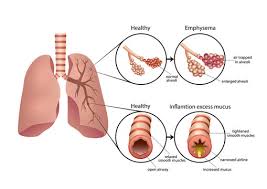Chasing the Sun: The Health Benefits of Winter Migration
The winter blues are a real thing, especially for those of us suffering from age-related diseases. The short days, lack of sunlight, and biting cold temperatures turn many of us into house hermits for four to six months of the year.
One way to combat cabin fever and weather related aches and pains is to travel to a warmer climate for the winter.

As a child growing up in southwest Florida, I joked with my family about the “snowbirds” who would arrive every October and stay until March. Their RVs and travel trailers would fill parking lots at grocery stores and clog highways with unwanted traffic.
Now, many years later, I understand more about the seasonal travelers who seek warm temperatures and sunshine.
Warm Climates Promote Good Health
Every autumn, older adults- often called “snowbirds”- pack their vehicles and head south, seeking refuge in the warmer climates of Arizona, Florida, California, and South Texas.
While this seasonal journey may appear to some as an extravagant lifestyle choice, medical research suggests this change of environment provides significant health benefits, particularly for those suffering from Seasonal Affective Disorder, Rheumatoid Arthritis, and various Autoimmune Diseases.
Understanding Seasonal Affective Disorder
In the 1980s, Dr. Norman Rosenthal, M.D. identified a clinically recognized type of depression that typically begins in late fall and resolves itself in spring. Seasonal Affective Disorder is more than just the blues. According to Dr. Rosenthal,
“The body’s biological clock, which regulates hormones, sleep, and mood depends on light exposure. When that exposure diminishes in winter, many people experience a significant disruption to their physical and mental well-being.”

SAD is particularly bothersome for older adults whose bodies naturally produce less vitamin D. Lack of sunlight, combined with more time spent indoors due to cold temperatures, limits light exposure and creates a physical ailment.
The symptoms of SAD- low mood, depression, loss of interest in everyday activities, fatigue, and loss of appetite- can complicate existing health problems. It can also lead to a diminished quality of life.
Winter Weather And Arthritis

Anybody with arthritis can tell you that cold, damp weather causes an increase in joint pain and stiffness. This is another reason senior citizens travel to warm destinations.
Over 50 million Americans have been diagnosed with arthritis. Most of these individuals are older and possibly facing other health issues. Remaining in a cold climate only heightens physical ailments faced by senior citizens.
While doctors disagree about the validity of this claim, studies by the Arthritis Foundation have gathered data that supports the link between arthritis pain and winter weather.
- When barometric pressure changes, tissues in the body expand and contract, increasing joint pain.
- The viscosity of synovial fluid, the clear liquid that lubricates joints, changes during cold weather and makes joint movements more painful.
- Short days and cold temperatures reduce physical activity such as walking or swimming. This leads to stiffness and pain as joint movements decrease.
- Severe cold weather causes increased pain sensitivity in older adults.
Over-wintering in a warm climate provides many benefits for people with arthritis. Longer days and an increase in vitamin D help promote immune health and joint health. Warmer weather also encourages people to get out and exercise more. This leads to a decrease in pain and stiffnesss in the joints.
More health Benefits of Warmer Winters
Improved joint health and relief from SAD are just a few of the benefits of warm weather destinations for seniors.
Cold weather and indoor heating can cause increased risks for respiratory distress in older adults. Asthma, COPD, and emphysema attacks greatly increase in cold climates.

Breathing in cold air causes airways to constrict and become irritated. This irritation makes it more difficult to breathe. Also, this irritation leads to more mucous production in the sinuses. This creates a situation that makes it even harder to breathe. Increased mucous production also leads to spasmatic coughing which irritates the airways even further.
In warm climates, breathing is easier because the air is already warmed and has a level of humidity that keeps dry air from irritating bronchial tubes. This leads to an increase in activity, less sick time, and a better quality of life.
Cardiovascular health is also better in warm climates. Just as cold air tightens airways and makes breathing difficult, frigid temperatures can cause arteries to constrict. This effect is called vasoconstriction and affects the fingers and toes first.
Because blood has to circulate throughout the body, when it reaches the narrowed arteries in the fingers and toes, the flow rate slows. This leads to higher blood pressure as the heart has to work harder to recirculate the blood through the narrowed arteries.
According to the American Heart Association, you might be 30% more likely to suffer a cardiac issue during cold weather as compared to warmer weather.
Physical conditioning is often better in warmer climates as people get outdoors more and exercise or enjoy social activities. Even 15 minutes of conversation and paced walking can have tremendous benefits on the health of older adults.

Increased physical activity also helps with balance, memory, and cognition. Not to mention the enjoyment that comes from interacting with others our age.
Warmer climates also lead to fewer digestive issues and better heart health through improved diets. The abundance of fresh fruits and vegetables present in warm climates has lasting effects on overall health.
Sunshine – It’s Good for the Soul and the Whole Body
There are so many benefits to spending winter in a warm climate. Not only will your mental health improve, but the increase in sunlight and temperature aides your physical health as well.
It is no wonder that senior citizens travel south for winter. It isn’t just an escape from the snow and ice. It is an opportunity to improve your life.
In a future post, I’ll highlight some of the best warm weather destinations for seniors, from Arizona to Florida and lots of places in between.